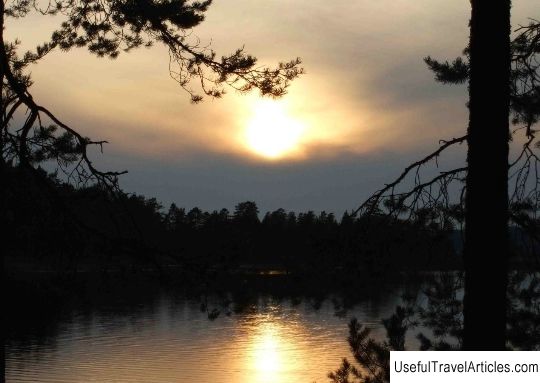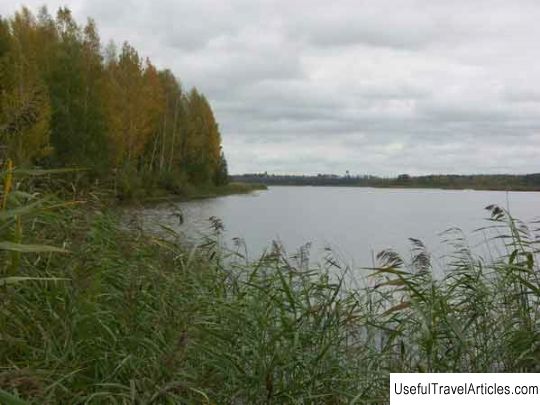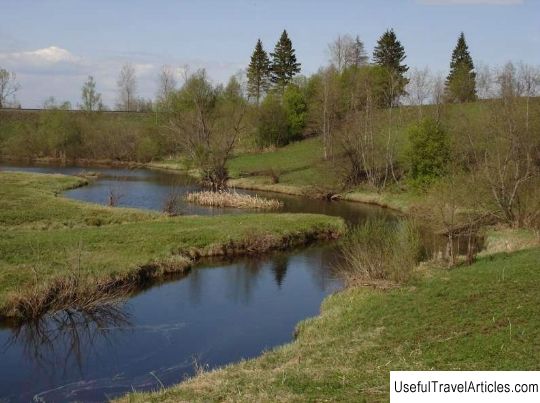Karst lakes description and photos - Russia - North-West: Novgorod region
Rating: 8,2/10 (7854 votes) 
Karst lakes description and photos - Russia - North-West: Novgorod region. Detailed information about the attraction. Description, photos and a map showing the nearest significant objects. Photo and descriptionThe unusual reserve is located on the lands of Borovichsky and Khvoininsky forestry, which are located in the north-east of the Novgorod region. Its unusualness lies in the fact that it is a reserve that unites a unique natural phenomenon - karst lakes. The reserve includes both large lakes - Sezzhee, Shergoda, Gorodno, Vyalets, Lyuto, Yamnoe, and a garland of small lakes, which received, due to the peculiarity of their position stretched for eighteen kilometers, the name - Molodilinskaya chain. The territory of the reserve is quite large, almost eleven thousand hectares. Lakes were formed at the place of occurrence of dolomites and limestones, which are well dissolved by water. One of the features of karst lakes is the periodic change in water level. Locals say the lakes breathe. Indeed, it is like breathing. The water level rises and falls, like a chest when breathing. Usually the level drops to the maximum in summer, some lakes leave water altogether. The water returns in the fall. Sometimes the water leaves the lakes in the winter season, then the ice cover falls under its weight to the bottom of the lake. The crash of falling ice can be heard at a great distance. Each karst lake changes the level in different ways. For example, Lake Gorodno splits into several parts when the level drops. And when the water completely leaves it (this happens with a twenty-year cycle), the lake becomes an excellent pasture. It happens, and vice versa, the water does not go into the ground, but literally breaks out from under it. Floods occur so severe that to protect against them, Lake Gorodno was connected with the Suglitsy River by a diversion canal. Some other lakes included in the Molodilinskaya chain, and Lake Vyalets, have similar behavior and frequency of water level changes. At the same time, nearby lakes can have a completely normal water cycle. Lake Belets, located at a distance of two hundred meters from Lake Grodno, has a constant water level, while the level of its neighbors changes. The constancy of the water level explains the fact that the water of Lake Belets can be seen almost ten meters deep on a sunny day. For such crystal clear water, the lake probably got its name. Karst lakes belonging to the Volkhov basin do not overflow and do not flood nearby lands. The water level in them changes in different ways. For example, Lake Yamnoye was left without water in the winter of 1965, and the ice on it ended up at the bottom. The rest of the lakes located in the area have not changed in any way. The water returned to Lake Yamnoe only after fourteen days. Karst lakes are unique and capricious. Lake Sukhoye (thirty-five kilometers east of the town of Borovichi) loses water completely in September every year, and water leaves the Borovskoye and Limandrovskoye lakes in winter. But all these three lakes are close by. The unpredictability of changes in the water level has given rise to many legends. Some of them tell that the watermen from the neighboring lakes played cards for water, and when one waterman lost to another, the water from his lake went into another. And since cards can be played at any time, the water leaves the lake at any time. According to another legend, one waterman went to visit another and closed the doors loosely, and the water flowed out of the lake. In 1977, the karst lakes, due to their uniqueness and beauty of the natural landscape, were taken under the decision of the Novgorod Regional Executive Committee. protection of the state. In addition to unique lakes on the territory of the reserve, you can pay attention to rare plant species, many of which are listed in the Red Book and are protected. Patrolling the territory of the reserve takes place all year round, but in summer it intensifies.        We also recommend reading Roman cryptoportico (Criptoportico Forense Forum) description and photos - Italy: Aosta Topic: Karst lakes description and photos - Russia - North-West: Novgorod region. |




